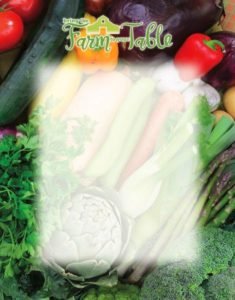A Dozen Ways to Enjoy Peppers
Peppers are not just another pretty vegetable. Packed with vitamin C and water, they can be added to at least a dozen different dishes to boost color, taste, and texture. Beyond vitamin C, red bell peppers contain the antioxidant capsanthin, which gives them their bright red color while yellow bell peppers contain violaxanthin. They also contain polyphenol quercetin, which is linked with reduction of heart disease and cancer. 1
While bell peppers may be the most popular of the species, jalapeno, chili, and serrano peppers add heat and flavor to your meals. These hot peppers contain a chemical called capsaicin in their seeds which has been linked with anti-tumor activity as well as metabolism-boosting properties. 2, 3 Below are a handful of ideas on how to use these versatile veggies.
- Start your day with peppers and eggs. Sautee bell peppers with onions and toss them in your eggs, omelets or frittatas. Serve the eggs on a whole-wheat English muffin or rye toast.
- Try Chili Rellenos. Preheat your oven to broil. Broil 6 poblano peppers on a parchment paper-lined tray for 10 minutes. Let cooked peppers steam in a covered bowl for 15 minutes as they cool. Rinse cooled peppers and cut a slit along the side then peel off their skins and remove their seeds. Stuff the peppers with thick strips of Mexican cheese (queso asaderos). Whisk 2 egg yolks in a bowl and add 1 tsp. baking powder. In another bowl, whisk 2 egg whites. Fold egg whites into egg yolks. In a separate bowl, add ¾ cup flour. Heat 1 cup canola oil for frying. Roll a pepper in flour then dip then in egg mixture before frying to a light brown. Repeat with each pepper.
- Add chopped jalapeno peppers to your pasta or brown rice for a kick of flavor.
- Make mango peach salsa with serrano peppers. Mix together 2 chopped mangos, 2 cups fresh peaches, 2 cloves minced garlic, ¼ cup chopped cilantro, ¼ cup fresh lime juice, 2 diced serrano peppers, and ¼ tsp. cumin. Serve with tortilla chips or fish tacos.
- Add poblano peppers to enchiladas, burritos, tacos or other favorite Latin dishes.
- Sautee bell peppers with onions and use with fajitas, tacos, or sandwiches.
- Include chopped Anaheim peppers in chili, soup or stir-fries. They’re milder than other peppers.
- Make stuffed peppers for dinner. Cut the tops off of 4 bell peppers and hollow out the seeds. Stuff peppers with a ½ cup mixture of white rice and ground beef seasoned with garlic, cumin, and salt. Place in a baking dish and cover with tomato sauce then bake for 30 minutes at 350 degrees.
- Enjoy Parmesan peppers. Place 4 quartered bell peppers on a baking sheet after removing their stems, core, and seeds. Toss with 1 clove minced garlic, 1 Tbsp. oregano, 1 Tbsp. olive oil and 1 tsp. salt. Roast skin side down on 425 until soft. Top with Parmesan cheese and serve once the cheese has melted.
- Top sandwiches or pizza with hot pickled pepper rings.
- Make ancho red pepper sauce. Place 3 ancho chili pods in a large bowl. Cover with boiling water and let them rest for 30 minutes. Take off the stems and chop the peppers. Reserve the liquid. Heat 2 Tbsp. canola oil in a large pan. Add 1 chopped onion, 3 cloves minced garlic, 2 seeded tomatoes, 3 roasted/chopped peppers and ancho chilis and cook for 20 to 30 minutes until tomatoes are completely soft. Cool the tomatoes, then place in a blender with the reserved liquid, 2 Tbsp. red wine vinegar, 1 ½ Tbsp. honey and ¼ cup fresh cilantro. Move sauce to a container and refrigerate until ready to use.
- Enjoy a variety of pepper strips with your favorite hummus.
Ready for a great dinner? See what we made with peppers and more for a Fajita dinner right here!References:1. Yamagata K1. Polyphenols Regulate Endothelial Functions and Reduce the Risk of Cardiovascular Disease. Curr Pharm Des. 2019;25(22):2443-2458.
- Liu Y.P., Dong F.X., Chai X., Zhu S., Zhang B.L. and Gao D.S. (2016) Role of autophagy in capsaicin-induced apoptosis in U251 glioma cells. Mol. Neurobiol.36, 737–743
- Jia Zheng,1Sheng Zheng,2 Qianyun Feng,2 Qian Zhang,1 and Xinhua Xiao 1 Dietary capsaicin and its anti-obesity potency: from mechanism to clinical implications. Biosci Rep. 2017 Jun 30; 37(3)





